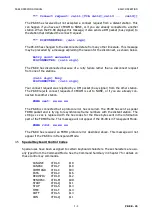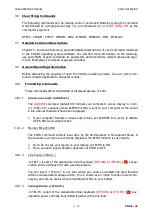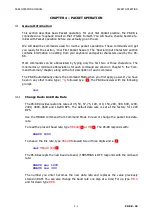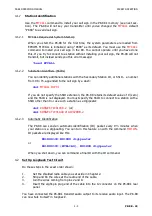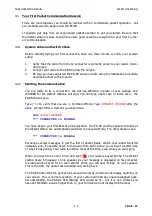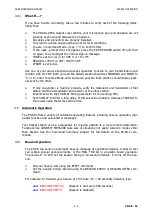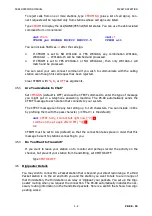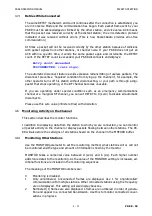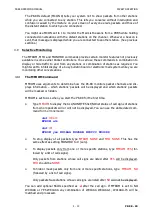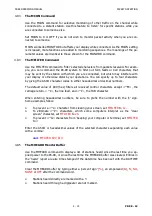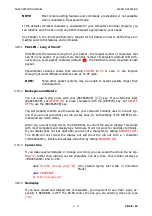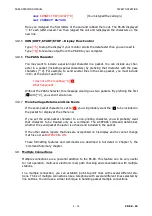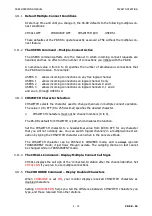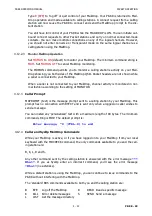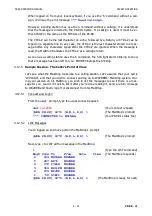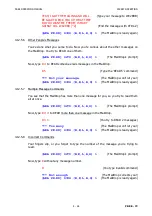
PK-88 OPERATING MANUAL
PACKET OPERATION
4 - 12
PK-88 - 59
3
Connect request (C) frames and disconnect (D) frames are also displayed with the
headers.
4
This is the PK-88's default value. Unnumbered acknowledgment (UA) of connect and
disconnect frames are also displayed with either the characters UA or DM and a
header.
5
Receive Ready (RR), Receive Not Ready (RN), Reject (RJ), Frame Reject (FR) and I-
Frames (I) are also displayed.
6
Poll/Final bit and sequence numbers are also displayed.
Before this next step, verify that your loopback test cable is still connected to the PK-88's
J2 RADIO connector.
o
Type:
[^C]D[
↵
]
to make sure you are DISCONNECTED.
o
Type:
MONITOR 4
. The PK-88 responds with:
MONITOR was 4
.
o
Type:
CONVERSE
, then type:
This is a test packet
.
Your monitor now shows:
{MYCALL}>CQ:This is a test packet.
Because the UNPROTO parameter is defaulted to the address CQ, your packets are sent
to CQ – you are not connected to any other station. Your packet was 'heard' and decoded
by the PK-88 and displayed with the packet header containing the sending station's call
sign and the destination.
4.8.2
Monitoring Digipeaters – The MRPT Command
Set
RRPT ON
to see any digipeater stations being used. This feature is useful if you want
to connect to a station you are monitoring and need to know a digipeater route in order
to reach it. For example, you might see the following:
WX1AAA*>WX2BBB>WX3CCC:Hello, Bill!
This packet went from WX1AAA via WX2BBB to WX3CCC. The
*
shows you which station
you actually decoded. If the PK-88 had decoded the packet from WX2BBB, the display
would have shown:
WX1AAA>WX2BBB*>WX3CCC:Hello, Bill!
If several digipeaters are active, or if the message lines are long, the display may be diffi-
cult to read. You can put the header on a separate line from the text by setting
HEAD-
ERLN ON
:
WX1AAA*>WX2BBB>WX3CCC:
Hello, Bill!
4.8.3
Monitoring Other Stations While Connected
Use the MCON command for selective monitoring of other traffic on the channel while
connected to a distant station. MCON works like MONITOR, but affects your display while
in the connected state. As the value of MCON is increased, additional functions are in-
cluded in the monitoring sequences.

